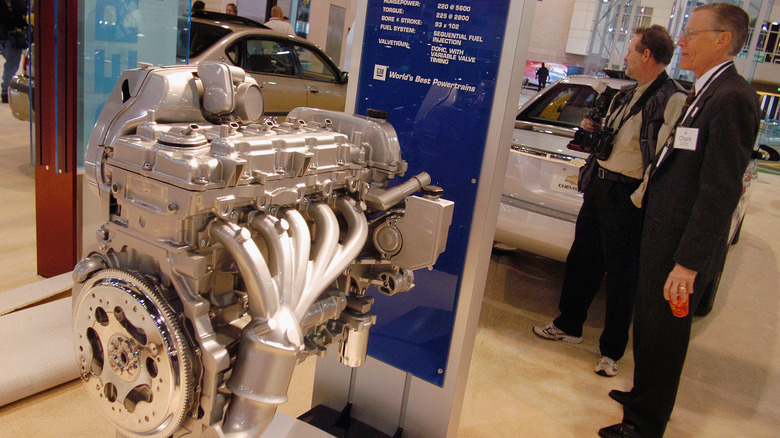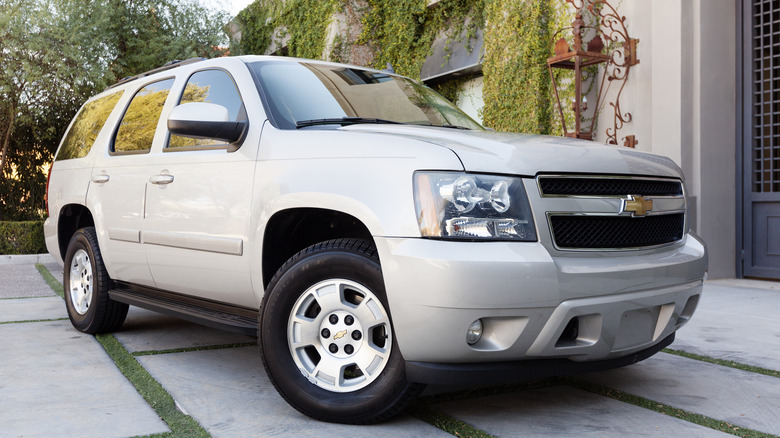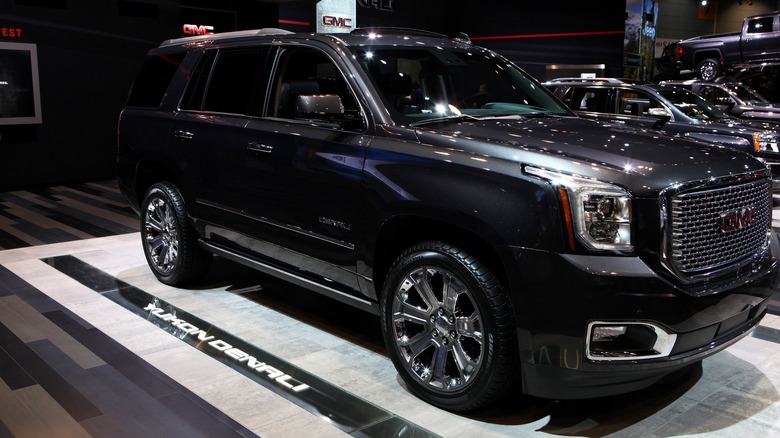The Best And Worst Years For The General Motors Vortec 5.3 Engine
In general, the General Motors Vortec 5.3-liter V8 is a powerful, dependable engine. If you're not familiar with General Motors' Vortec engines, they are a family of small-block V8s that GM put into wide use across its truck and SUV models starting in the mid-1990s. Built around vortex technology, which generated swirl inside the engine's combustion chamber to help the gasoline atomize, the Vortec line developed alongside General Motors' classic LS engines. While the Vortec and LS engines have several differences — notably, Vortecs are cast-iron blocks while LSes are aluminum — the primary difference was in application: GM branded their truck and SUV engines "Vortec" and kept the LS label for high-performance cars. Indeed, Vortecs and LS engines are similar enough to have interchangeable parts, making Vortecs popular for engine swaps.
There are a handful of 5.3-liter V8 engines in the Vortec family, and they are broken into two categories: Gen III and Gen IV. As a rule, Gen III is the superior plant. Buyers should be more wary of the Gen IV model.
The good years: 1999-2006
"Gen III" and "Gen IV" don't refer to the Vortec engine itself. Rather, the terms refer to the generations of GM small-block V8s, which General Motors has been iterating on since the 1950s. The first Vortec-branded 5.3L V8 hit the market in 1999, and the transition to Gen IV came with the 2007 model year. However, some Gen III engines were still under the hood of 2007 model-year trucks and SUVs. So, without digging into the nitty gritty details, the safest way to ensure you're getting a third-gen Vortec 5.3 is sourcing a vehicle that is from 2006 or older.
Though the 5.3 didn't come to market until 1999, the basic construction is extremely similar to the 50s-vintage small-block Chevy V8, which is widely considered one of the best V8 engines Chevy ever produced. A camshaft in block, pushrods, a timing chain, and simple overhead valve construction make for good power without excessive strain on the engine's components.
The Gen III Vortec 5.3 was produced in four forms: the LM4, LM7, L59, and L33. They all share bore, stroke, and design. The biggest departure in these particular models is the L33, which uses an aluminum engine block and cylinder heads. The L33 was known as the "HO" or "high output" variant. For the most part, all of these engines are safe buys so long as they've been maintained. Just check for vacuum leaks; these models use plastic intake manifolds.
The bad years: 2007-2014
There are eight different variations of the Vortec 5.3-liter V8 in the fourth-generation small-block V8 family. All suffer from the same issues, which can be summed up in two three-letter acronyms: AFM and PCV. AFM is an acronym for "Active Fuel Management," a system that deactivates half the engine's cylinders when not needed. On paper, this should increase fuel efficiency. In practice, the pressure relief valve that sprayed oil onto piston skirts allowed oil to bypass the piston rings and enter the combustion chamber, where it was then burned. In addition, the positive crankcase ventilation system (PCV) featured a faulty valve cover design that allowed oil to pool at the valves instead of draining back into the oil pan. From there, the oil could make its way into the combustion chamber. The result could be a fouled, smoky, dangerous ride.
GM would eventually pay out over $100 million in a class-action lawsuit citing Gen IV 5.3 Vortec engines. Not only could the burned engine oil foul spark plugs and cause the engine to run rough, it could also consume enough oil that the engine would no longer be properly lubricated. That led to increased wear and outright engine self-destruction.


